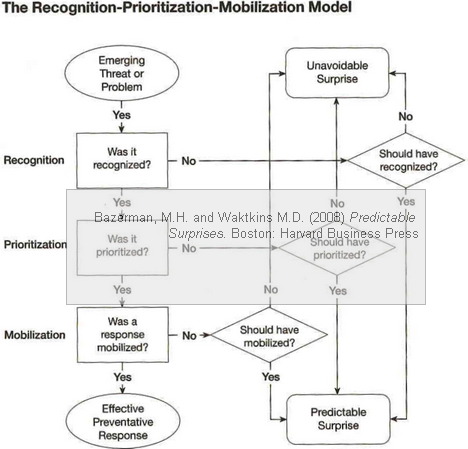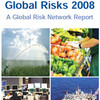 Last week a volcanic eruption on Iceland took Europe’s civil aviation authorities by total surprise, prompting them to shut down air traffic over much of Europe for almost an entire week. An unprecedented event? Yes. Was it a surprise? Maybe Yes, maybe No. Should authorities have seen it coming? Yes. Then why wasn’t Europe prepared? On the operational level, among air traffic controllers, the awareness of the widespread impacts of a volcanic ash cloud from Iceland has been there for quite some time. They have indeed planned for it and there have been regular exercises.
Last week a volcanic eruption on Iceland took Europe’s civil aviation authorities by total surprise, prompting them to shut down air traffic over much of Europe for almost an entire week. An unprecedented event? Yes. Was it a surprise? Maybe Yes, maybe No. Should authorities have seen it coming? Yes. Then why wasn’t Europe prepared? On the operational level, among air traffic controllers, the awareness of the widespread impacts of a volcanic ash cloud from Iceland has been there for quite some time. They have indeed planned for it and there have been regular exercises.
Iceland: Regular exercises and training
The Norwegian newspaper Aftenposten and TV2 have dug up the most recent issue of Flygelederen, the members’ magazine for the Norwegian Air Traffic Controllers’ Association, which late in 2009 featured a 4-page article on what if one of the largest volcanoes on Iceland, Katla, erupts and sends a plume of ash 50000 feet into the air? The consequences are dire. So, this is not something unheard of, and ISAVIA, which operates airports and provides air traffic control on Iceland, has volcanic ash exercises several times per year on a regular basis.
ICAO Contingency plan
ICAO, the International Civil Aviation Organization has developed a special contingency plan for volcanic ash. However, the plan deals with what to do with planes and airports only. It does not deal with other impacts, such as passengers stranded at airports, supply chain disruptions and cargo backlogs. Nonetheless, it shows that the operational side of air traffic was fully aware of what would happen, but not so the managerial side, let alone the political decision makers. Which reminds me of this earlier post on my blog, where it seems quite common in supply chain management that logistics management has no idea what concerns there are in logistics operations.
Predictable surprise?
 Last week’s events also remind me of the book Predictable Surprises: The Disasters You Should Have Seen Coming, and How to Prevent Them by Bazerman and Watkins, where they they explain how many disasters are preceded by clear warning signals that leaders miss or ignore. They define predictable surprises as “an event or set of events that take an individual or group by surprise, despite prior awareness of all of the information necessary to anticipate the events and their consequences.” Does it sound familiar? What happens is usually this:
Last week’s events also remind me of the book Predictable Surprises: The Disasters You Should Have Seen Coming, and How to Prevent Them by Bazerman and Watkins, where they they explain how many disasters are preceded by clear warning signals that leaders miss or ignore. They define predictable surprises as “an event or set of events that take an individual or group by surprise, despite prior awareness of all of the information necessary to anticipate the events and their consequences.” Does it sound familiar? What happens is usually this:

I think this diagram from the book perfectly illustrates why things went wrong last week. Air traffic authorities simply did not know what to do, how to differentiate safe from non-safe from maybe safe to fly zones, so they just shut down the whole thing to be on the safe side. The rules that took them several days to develop, could perhaps have been there from the very beginning, had someone at the top level thought the full event through beforehand.
Were we ready?
I think this summary will have to suffice:
- Operational readiness: Check.
- Managerial readiness: Perhaps Yes, more likely No.
- Political readiness: Absolutely No.
Cry wolf?
According the Aftenposten article, Egill Thordarson of ISAVIA, has made a small attempt at raising awareness by sending out volcanic ash advisories to the aviation authorities in the UK and Norway on a daily basis for several years, pretending what would happen today if there were an eruption. Why UK and Norway? Because those are the countries first to be hit based on the prevailing winds.
Why were your warnings not taken seriously?
– I don’t know. Perhaps there are too many closed circles of people, where information is not passed on to the next level.
European authorities say they could not have foreseen this…any thoughts?
– The people who say so probably really didn’t know.
But the results of your exercises have shown dramatic consequences, time and again?
– Perhaps, because the consequences were so devastating, people stopped thinking about it.
Well, in my opinion, if Egill Thordarsson had not done what he did, we would probably have been even less prepared than we were (not) last week. I can only hope that we will fare better next time, because Iceland’s volcanoes are not going to erupt less in the future. Katla has been overdue for many years…
Links
- aftenposten.no: Advarte gang på gang
- Norsk flygelederforbund: Flygelederen 4/2009
- tv2nyhetene.no: Har advart i mange år
Related
- husdal.com: Can we do without air traffic?












